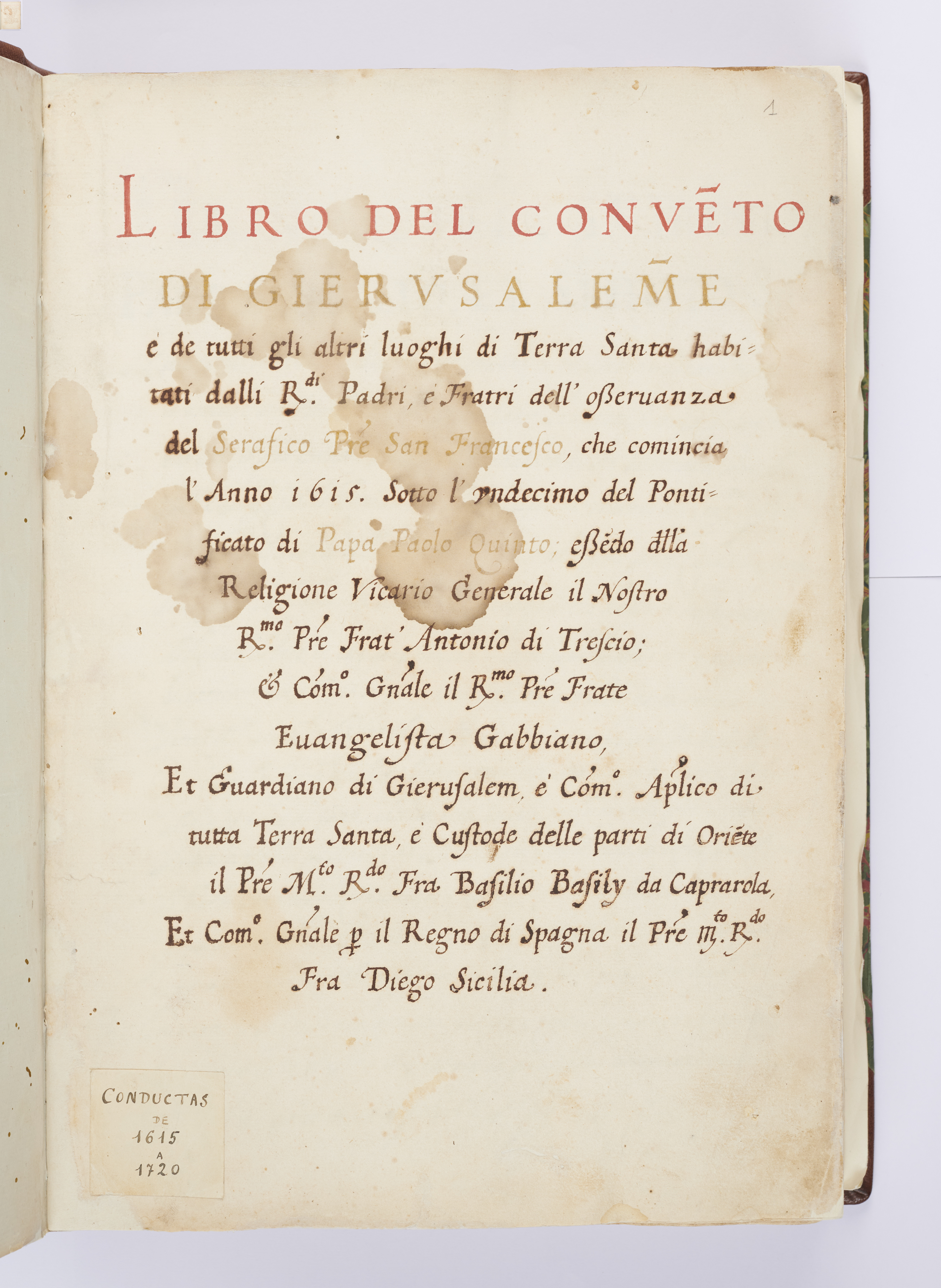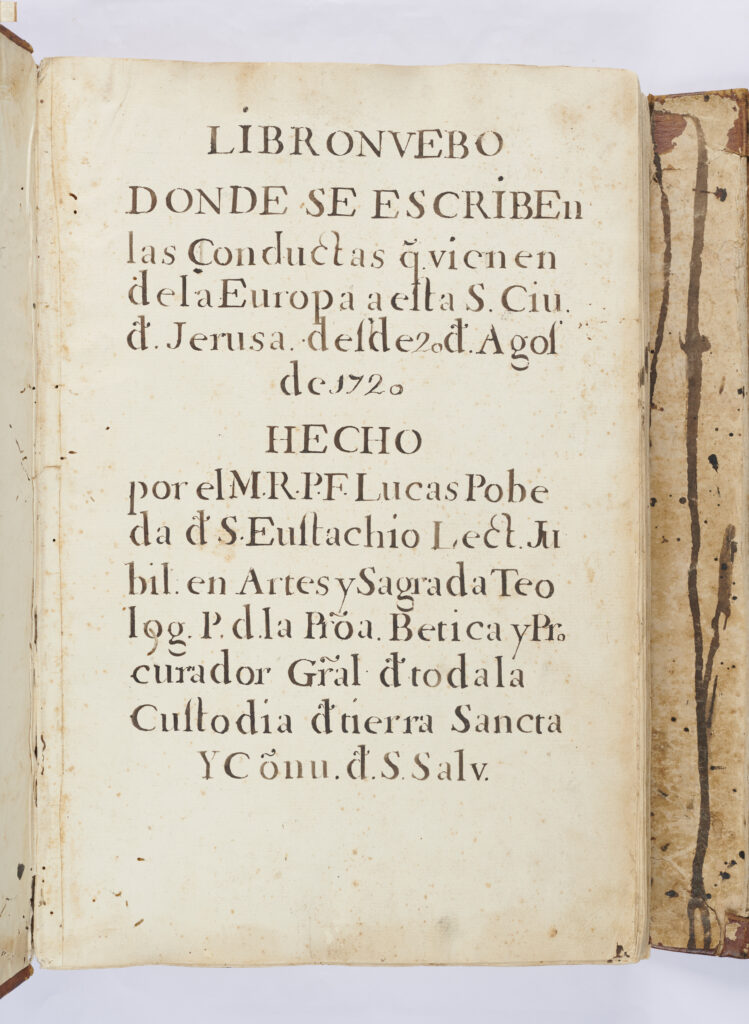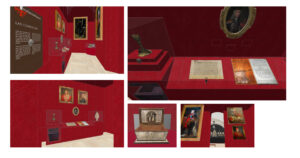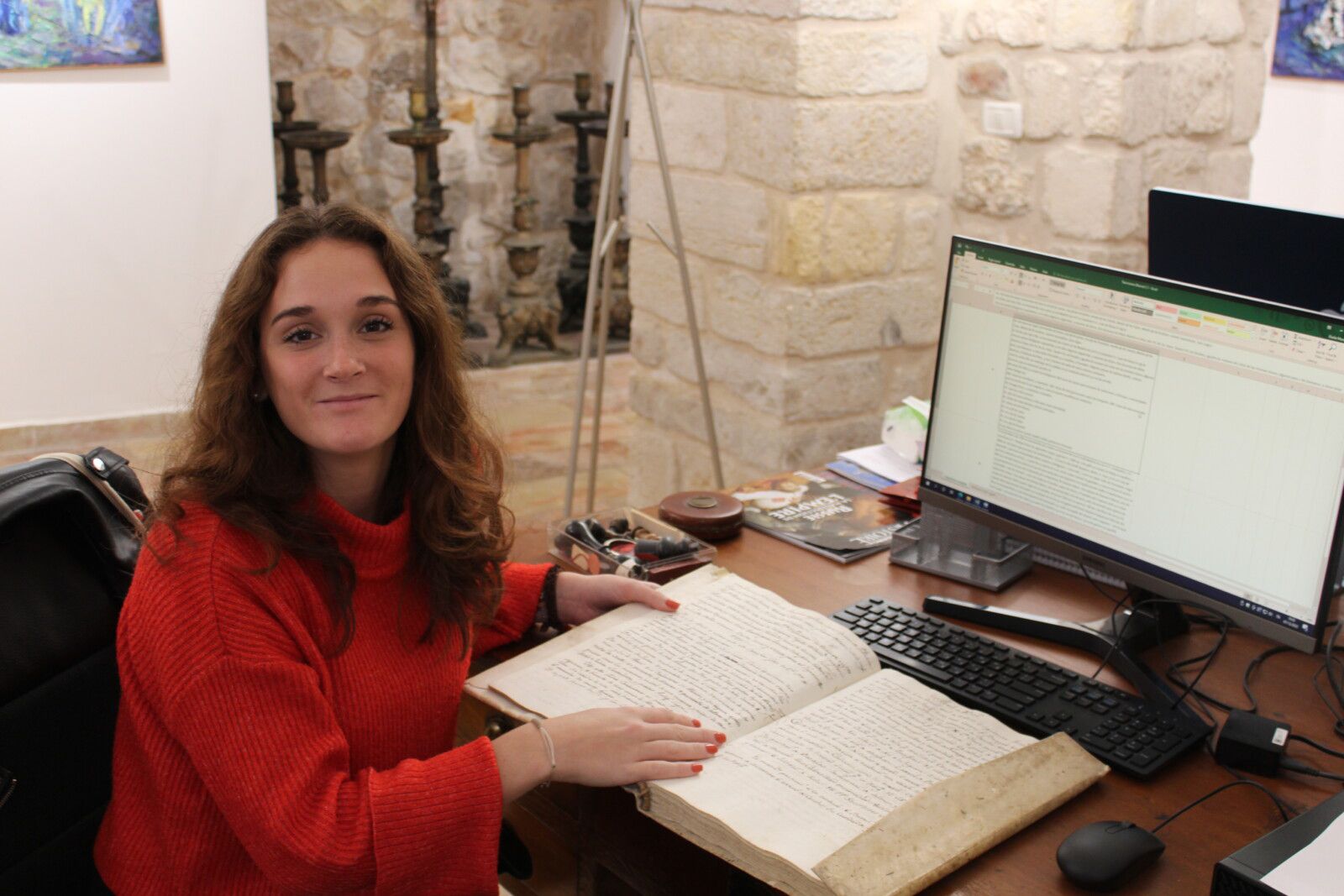Other Collaborations
The ‘Registri delle Condotte’ Project
HOYLAB has established a collaboration with a project based at the Cultural Heritage Office of the Custody of the Holy Land revolving around the ‘Registri delle Condotte’.
The ‘Registri delle Condotte’ are a set of sixteen manuscripts, preserved at the Historic Archive of the Holy Land, of diverse content, dating, and appearance, chronicling the movement of objects, money, and individuals to Jerusalem between the 16th and 20th centuries.


Some volumes provide detailed accounts of the arrival of items (such as foodstuff, clothing and textiles, construction materials, and valuables) at the Franciscan monastery of St. Saviour. Other registers record the names of the friars or laypeople responsible for the transportation (referred to as ‘conduttori’), while further ones contain bills, receipts, financial notes, and official documents that governed this flow to and from the Holy Land.
The ongoing project involves digitizing the ‘Registri delle Condotte’ and transcribing their content with the purpose of tracing information within them about the origins of the items still present in the Custody’s collections.
Far left: title page of Condotta 6 (1615-1720). Near left: title page of Condotta 8 (1720-1885)
Such collections narrate the eight centuries of Franciscan presence in the Holy Land and comprise sculptures, paintings, goldsmith’s artefacts, manuscripts, liturgical robes, archival documents, and much more. Some of these items were presented as generous offerings between the 16th and 18th centuries by European monarchs, the papacy, and benefactors, signifying the donors’ devotion to the holy sites and their support for the Custody. Others, on the other hand, are products for internal use and production by the Custody of the Holy Land, revealing the more mundane and practical aspects of its history.
The Cultural Heritage Office, led by Fr. Stéphane Milovitch OFM, also President of the Holy Sepulchre, is working on these collections as part of its founding mission to enhance the cultural assets of the Franciscans and of wider plans for the opening of a second, historical section of the Terra Sancta Museum, slated for 2026.
Below: The project of the room dedicated to the ‘Condotte’, displayed next to the objects they describe, which are still within the Franciscans today.

The initiative dedicated to the ‘Registri delle Condotte’ has engaged diverse professionals throughout the years: Marie des Neges, overseeing the cataloging and museum database; Christina Bullata, presently involved in the Bibliothèque Nationale de France ‘Bibliothèques d’Orient’ project, dedicated to manuscript digitization; and Giulia Morotti, a civil service volunteer and Philology of Modern Languages graduate of the Università Cattolica del Sacro Cuore of Milan, who is contributing to the ongoing transcription process.
The collaboration with HOYLAB was developed because the ‘Registri delle Condotte’ provide additional crucial evidence for the circulation of objects and people towards the Holy Land in the early modern period, one of the objectives of HOLYLAB.
In fact, the ‘Registri delle Condotte’ constitute a parallel source documenting such circulation, as they record what arrived to the Holy Land through the network of the Franciscan Custody. As such they can be compared to the account books of Franciscan Commissariats, kept in the Historic Archive of the Congregation for the Evangelization of People or ‘de Propaganda Fide’ in the Vatican City, which record what was shipped to the Holy Land through the same network and are the core archival source of HOLYLAB.

HOLYLAB would like to thank Giulia Morotti, ‘Custodian of the Condotte’, for contributing to the creation of this page and her collaboration with HOLYLAB.
The images displayed on this page are courtesy of the Cultural Heritage Office of the Custody of the Holy Land, with the request not to reproduce.
